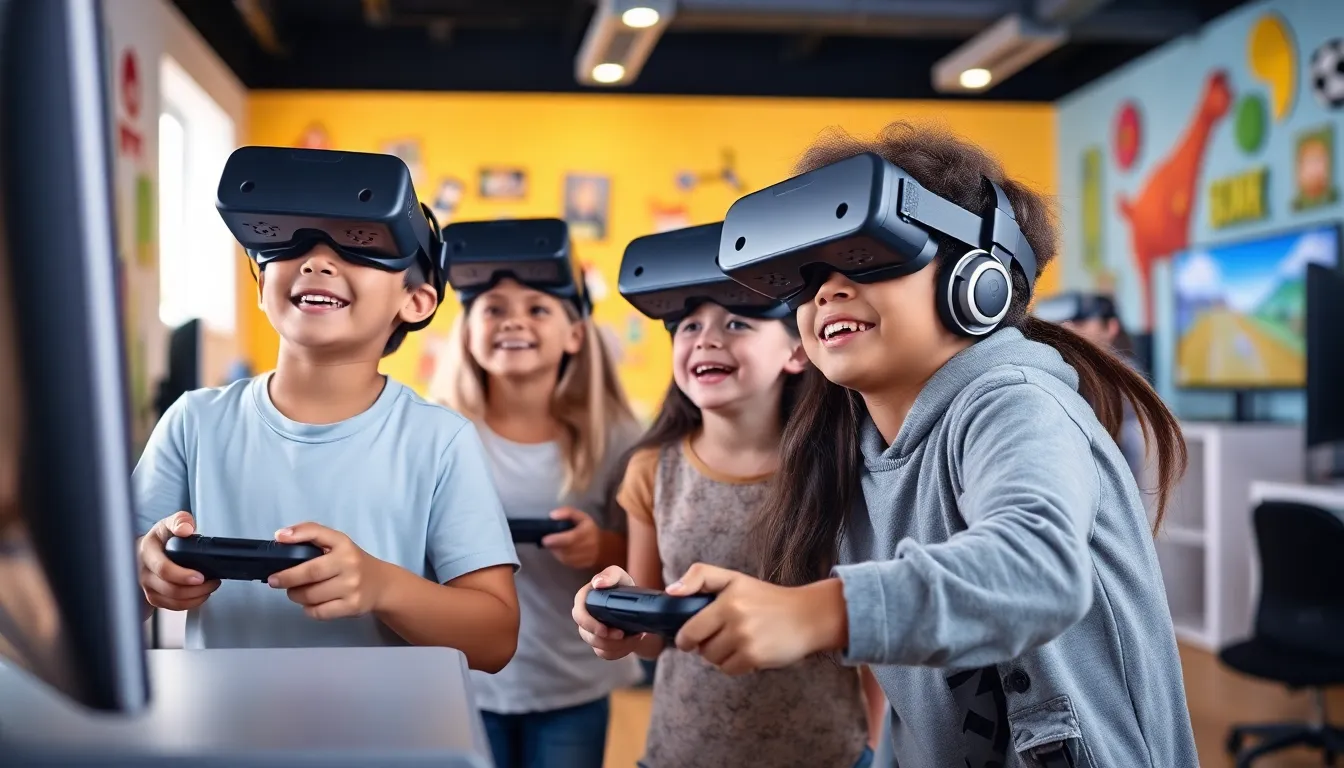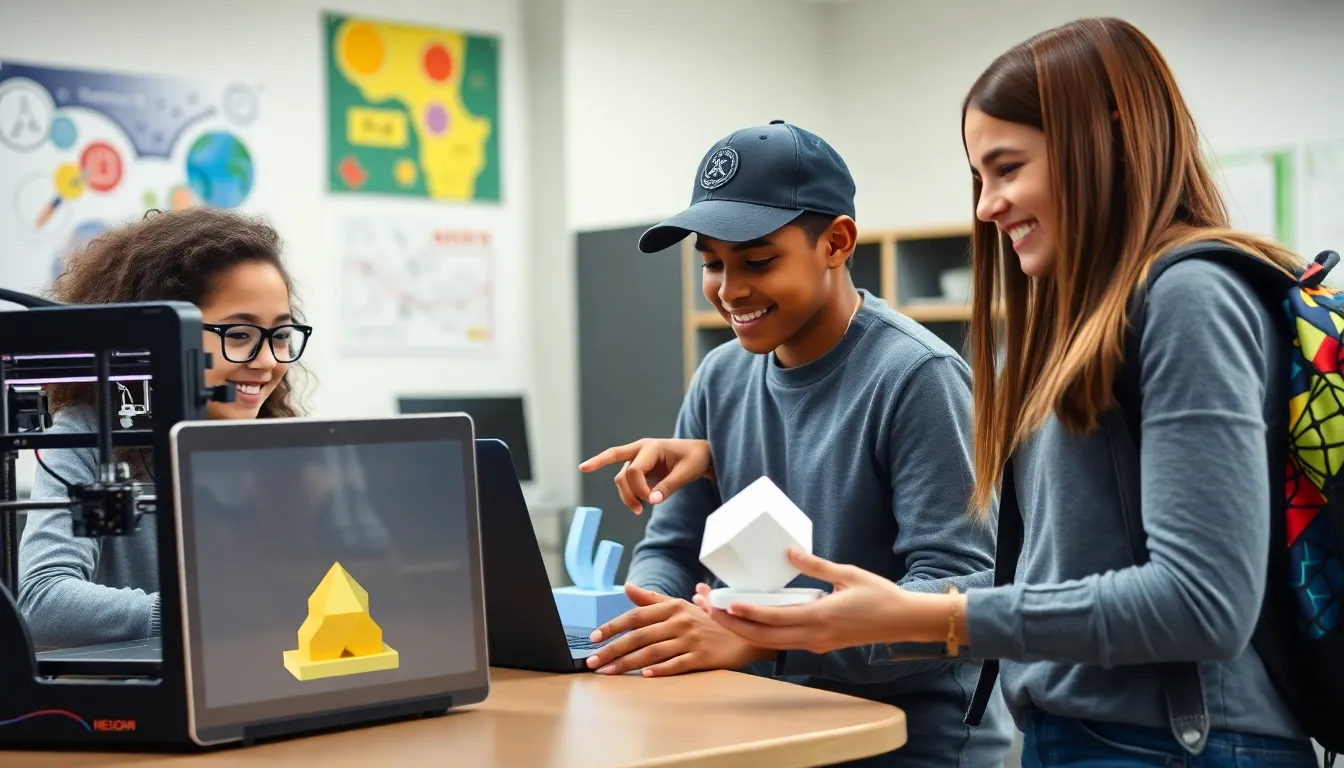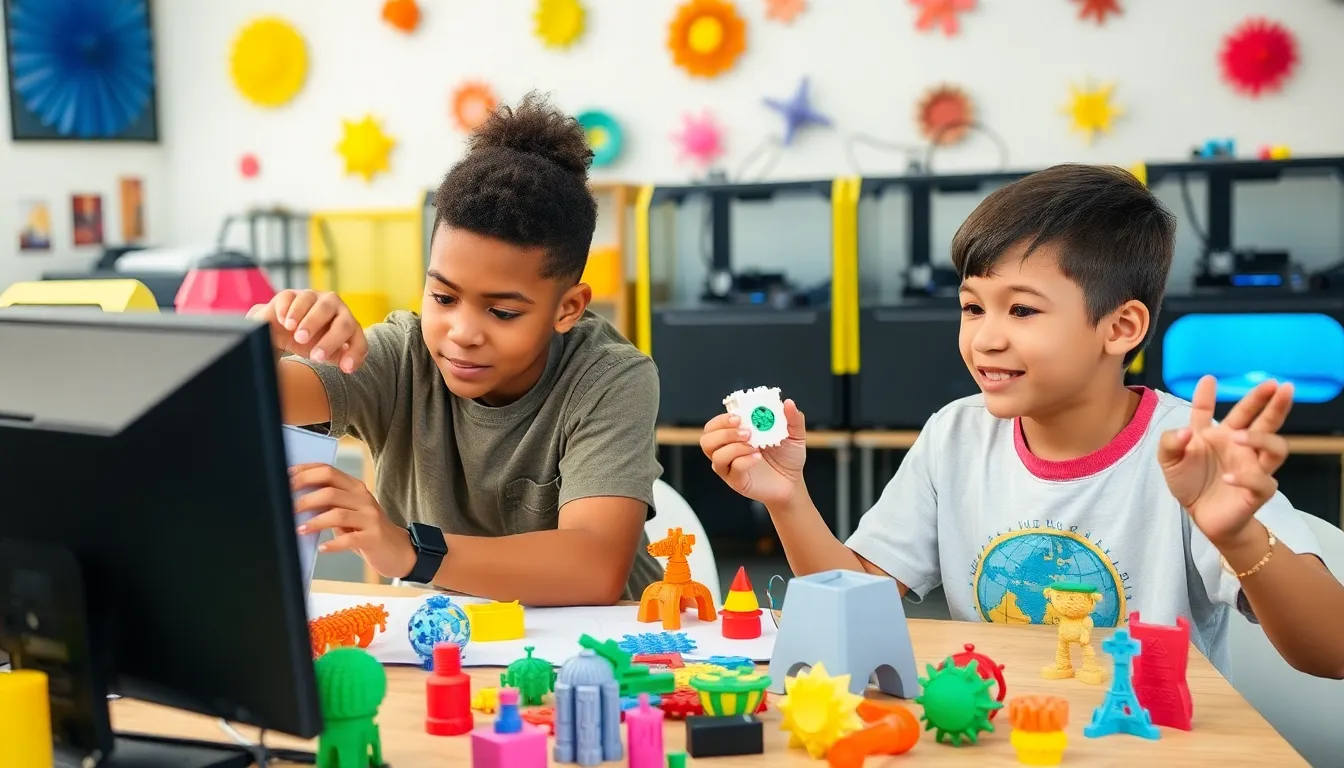Imagine a world where kids can battle dragons, explore outer space, or even swim with dolphins—all from the comfort of their living room. Virtual reality games for kids are not just a trend; they’re a gateway to limitless adventures that spark imagination and creativity. With immersive experiences that make video games feel like real life, these games transport children to realms where the only limit is their imagination.
Table of Contents
ToggleOverview of Virtual Reality Games for Kids
Virtual reality games for kids offer immersive experiences that captivate the imagination. These games allow children to adventure in engaging environments, such as vibrant fantasy worlds or realistic simulations. Engaging with characters and experiencing scenarios first-hand enhances their creativity and problem-solving skills.
Popular titles in this genre include “Astro Bot Rescue Mission,” which challenges players to navigate through intricate platforms while rescuing robotic friends. “Rec Room” serves as a social hub, enabling kids to interact with friends, collaborate on tasks, and play mini-games, all while fostering teamwork.
Developmental benefits exist alongside fun. Kids enhance their spatial awareness and improve hand-eye coordination through active gameplay. Utilizing VR also encourages healthy competition and teamwork, as many games feature multi-player modes.
Safety remains a priority when selecting VR games. Parents should ensure titles are age-appropriate, have user-friendly interfaces, and provide comfortable play experiences. Several platforms like Oculus Quest and PlayStation VR offer parental controls to monitor activity and screen time.
As technology progresses, new possibilities arise for educational VR games that merge learning with gameplay. Subjects like science, history, and art become interactive, making education more engaging for young learners. Immersive storytelling in VR can also spark interest in literature and the arts, presenting information in captivating ways.
Benefits of Virtual Reality Games for Kids

Virtual reality games offer numerous advantages for children, enhancing various aspects of their development. Engaging with these games creates a rich, interactive experience that transcends traditional gaming.
Enhanced Learning Experiences
Virtual reality significantly elevates learning experiences for kids. Immersive environments foster understanding of complex topics such as science and history through interactive storytelling. Students can virtually experience historical events, explore distant planets, or manipulate scientific concepts in real-time. This dynamic interaction boosts retention and comprehension, making the learning process enjoyable. For instance, apps like “Google Expeditions” allow children to visit the Great Wall of China or dive into the ocean’s depths, all from home. Such experiences ignite curiosity and encourage exploration beyond the classroom.
Improved Social Skills
Virtual reality games also foster improved social skills among children. By participating in multiplayer modes, kids interact with peers in engaging settings, enhancing their communication abilities. Games like “Rec Room” create opportunities for teamwork, collaboration, and social interaction. Players work together to complete challenges, encouraging them to develop problem-solving skills and establish connections. Engaging with others in these virtual worlds promotes empathy and understanding. This interaction mirrors real-life situations, giving children a safe space to practice socialization in a controlled environment.
Popular Virtual Reality Games for Kids
Numerous virtual reality games cater to children’s interests, providing both entertainment and educational value. Here are some of the most popular categories available.
Educational VR Games
Educational virtual reality games engage kids while teaching them about various subjects. “Google Expeditions” allows children to step inside historical landmarks or explore marine environments, making learning interactive. “Wildlife Explorers” offers virtual safaris, introducing young players to different species and their habitats. “Unimersiv” provides immersive lessons in science, history, and art, enhancing retention through visual storytelling. Each game emphasizes discovery, ensuring children grasp complex concepts in enjoyable ways.
Adventure and Exploration Games
Adventure and exploration games offer children thrilling experiences within fantastical worlds. “Astro Bot Rescue Mission” challenges players to complete intricate platforming tasks. “Rec Room” provides a social space filled with countless games, encouraging teamwork among peers. “Job Simulator” allows kids to step into fun careers, sparking creativity while engaging with the virtual environment. Each title promotes curiosity and problem-solving, giving children opportunities to embark on epic quests without leaving home.
Safety Considerations for Kids
Virtual reality gaming offers fun adventures, but safety remains crucial for kids. Parents play a key role in ensuring a safe gaming environment.
Age Appropriateness
Choosing age-appropriate games is essential. Developers often label their titles with age ratings, helping parents select suitable options. For instance, games like “Astro Bot Rescue Mission” cater to younger audiences, while others may target older children. Understanding the recommended age can help kids enjoy experiences without exposure to inappropriate content. Watching for descriptors like E for Everyone or T for Teen can guide parents in their choices, ensuring kids engage with appropriate material.
Supervision and Guidelines
Supervising gaming sessions contributes to safer experiences. Parents should monitor how long children play, limiting sessions to prevent fatigue and maintaining balance. Establishing rules around game types and interaction levels with other players can also enhance safety. Encouraging discussions about online interactions helps kids understand social boundaries and report any uncomfortable experiences. Setting up a designated gaming area can foster a focused environment where children play safely and responsibly.
Getting Started with Virtual Reality
Exploring virtual reality for kids starts with understanding the necessary tools and ensuring a safe environment. Both elements are essential for a rewarding experience.
Necessary Equipment
Children require specific equipment to dive into virtual reality. A VR headset like Oculus Quest or PlayStation VR provides immersion, while compatible controllers enhance interaction. High-quality headphones add to the experience by delivering sound that complements the visuals. Additional hardware like motion sensors ensures accurate tracking, amplifying the VR experience. Parents should check system requirements for each game, as some platforms may need additional upgrades. Consider using protective gear such as face covers to maintain hygiene during shared use.
Setting Up a Safe Play Area
Creating a safe play area is crucial for an enjoyable VR experience. Sufficient space allows children to move freely without obstacles. Arrange furniture and remove potential hazards like sharp corners or fragile items. Setting boundaries with clear markers helps kids stay within designated areas while playing. A soft surface, such as carpet or foam mats, provides a comfortable landing spot if they trip. Parents should supervise initial gaming sessions to ensure kids understand safety protocols. Establishing time limits reduces the risk of fatigue and eye strain, promoting healthier gaming habits.
Virtual reality games offer kids a unique blend of adventure and learning that can significantly enhance their development. These immersive experiences not only spark creativity but also foster social skills and teamwork. With a range of educational titles available, children can explore complex subjects in engaging ways that traditional methods often lack.
Parents play a vital role in ensuring a safe and enjoyable VR experience. By selecting age-appropriate games and supervising playtime, they can help their children navigate the exciting world of virtual reality responsibly. As technology continues to evolve, the potential for VR in children’s gaming and education is boundless, making it an exciting frontier for young explorers.






